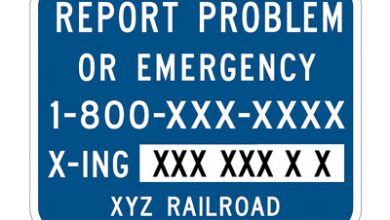How to Choose the Right Auto Insurance Deductible for Your Budget

When it comes to auto insurance, one of the key decisions you’ll need to make is selecting your deductible. The deductible is the amount you pay out of pocket when you file a claim before your insurance kicks in. It plays a crucial role in determining your monthly premium and can have a significant impact on both your short-term and long-term financial planning.
Choosing the right deductible for your budget is a balance between saving money on premiums and ensuring you’re not financially burdened if you need to file a claim. In this article, we’ll guide you through the process of understanding deductibles, how they affect your premiums, and how to choose the right one based on your financial situation, driving habits, and long-term goals.
What Is an Auto Insurance Deductible?
Before diving into how to choose the right deductible, it’s important to understand what an auto insurance deductible is.
- Definition: An auto insurance deductible is the amount you must pay out of pocket when you file a claim for damage or loss to your vehicle. It applies to collision and comprehensive coverage (depending on your policy). After you meet the deductible, your insurance company covers the rest, up to the policy’s limit.
- Example: If your deductible is $500 and you have a claim for $2,000 in damages, you would pay the first $500, and your insurer would cover the remaining $1,500.
How Does the Deductible Affect Your Premium?
The deductible you choose plays a direct role in your auto insurance premium—the amount you pay monthly, semi-annually, or annually for your coverage.
- Higher Deductible = Lower Premium: If you choose a higher deductible, your monthly premium will typically be lower. This is because you’re agreeing to pay more out of pocket in the event of a claim, so your insurer assumes less risk.
- Lower Deductible = Higher Premium: Conversely, if you opt for a lower deductible, your premiums will likely be higher. The reasoning is that the insurance company will pay more in the event of a claim, so they charge you more in premiums to offset that risk.
Factors to Consider When Choosing Your Deductible
Selecting the right deductible for your auto insurance policy depends on several personal and financial factors. Here are the key points to consider:
1. Your Financial Situation
- Emergency Fund: Your ability to pay the deductible should be a major consideration. If you don’t have an emergency fund or a financial cushion, opting for a high deductible could lead to financial strain if you have to file a claim. On the other hand, if you have a healthy savings account, you might feel more comfortable with a higher deductible, as you could cover the out-of-pocket costs without too much difficulty.
- Income and Cash Flow: Consider your monthly income and expenses. If paying a high deductible could strain your monthly budget or cause you to use your savings unexpectedly, it might be better to choose a lower deductible.
2. The Age and Value of Your Vehicle
- Older Vehicles: If you drive an older car with a lower market value, you may not want to pay for a high deductible, especially if the cost of the repairs is less than your deductible amount. In such cases, you may want to consider a lower deductible to make sure you don’t have to pay more than the value of your car.
- Newer Vehicles: If you drive a new or high-value car, a higher deductible may make sense because the vehicle is more likely to cost a lot to repair or replace. With a higher deductible, you can keep your premiums lower while ensuring the cost of major repairs or total loss is covered.
3. Driving Habits and Risk Exposure
- Commute Frequency: If you have a long daily commute or frequently drive in areas with high traffic or weather-related risks, you might be more prone to accidents or damage to your vehicle. In such cases, a lower deductible might be a safer bet to minimize out-of-pocket expenses.
- How Often You Drive: The more you drive, the higher your chances of being involved in an accident. If you’re on the road a lot, having a low deductible could be helpful, as it reduces the financial burden if an accident happens.
4. Insurance Coverage Type
- Collision and Comprehensive Coverage: Your deductible only applies to collision and comprehensive coverage. If your car is older or has a lower value, you might consider dropping comprehensive or collision coverage altogether, in which case the deductible becomes irrelevant. Alternatively, you may choose a higher deductible for these types of coverage to reduce your premiums.
- Liability Coverage: Liability insurance, which covers damages to other people’s property or injuries in an accident, does not require a deductible. So, your decision regarding deductibles only applies to optional coverages like comprehensive and collision.
Pros and Cons of Higher Deductibles
Choosing a higher deductible has several advantages, but it also comes with some potential downsides.
Pros of a Higher Deductible
- Lower Monthly Premiums: This is the most significant advantage. By opting for a higher deductible, you can reduce your monthly premiums and save money in the short term.
- Financial Flexibility: Lower premiums give you more room in your budget to allocate funds to other areas, such as savings, investments, or paying off debt.
- More Control Over Insurance Costs: With higher deductibles, you are essentially taking on more financial responsibility in exchange for a lower premium, which can be appealing if you are willing and able to manage that risk.
Cons of a Higher Deductible
- Out-of-Pocket Costs in Case of a Claim: A higher deductible means you’ll pay more out of pocket if you file a claim. This could be financially challenging if you have to make multiple claims in a short period.
- Risk of Not Filing Small Claims: With a higher deductible, you might be less inclined to file claims for minor damages because the cost would fall within the deductible amount. This could lead to increased repair costs over time.
Pros and Cons of Lower Deductibles
On the other hand, a lower deductible offers its own set of advantages and disadvantages.
Pros of a Lower Deductible
- Lower Out-of-Pocket Costs When You File a Claim: A lower deductible means you’ll pay less out of pocket if you need to make a claim. This could be beneficial if you’re involved in an accident or your car is damaged in a non-collision event.
- Peace of Mind: If you don’t have a large emergency fund or are not in a position to cover a significant deductible, a lower deductible provides peace of mind knowing that you won’t be hit with high out-of-pocket costs.
Cons of a Lower Deductible
- Higher Premiums: A lower deductible generally means higher premiums, which could make your overall insurance costs more expensive over time.
- Potential for Overinsurance: If you’re driving a low-value car or rarely drive, you may be overpaying for coverage with a low deductible.
How to Choose the Right Deductible for Your Budget
Now that you understand the pros and cons of different deductibles, here’s how to select the right one based on your personal circumstances:
1. Evaluate Your Financial Situation
Start by assessing your budget. Can you comfortably pay a higher deductible if something happens to your car? Do you have enough emergency savings to cover the cost of a claim? If not, a lower deductible might be the better option.
2. Consider the Value of Your Car
If your car’s value is low, it may not make sense to pay a higher deductible. In such cases, a lower deductible would reduce the risk of paying more than the value of your car in the event of an accident.
3. Look at Your Driving Habits
If you drive frequently or in high-risk areas, you might be more likely to file a claim, so a lower deductible could help keep costs manageable. On the other hand, if you’re a careful driver and rarely drive, a higher deductible could make sense to save on premiums.
4. Factor in Other Insurance Discounts
If you qualify for discounts, such as safe driver discounts, bundling discounts, or low-mileage discounts, you may be able to afford a higher deductible without compromising your financial situation.
Conclusion
Choosing the right auto insurance deductible is a critical decision that impacts both your premiums and your out-of-pocket expenses. By considering your financial situation, the value of your car, your driving habits, and your long-term financial goals, you can select the deductible that provides the best balance between savings and protection.
Whether you opt for a higher deductible to save on premiums or a lower deductible for peace of mind, it’s essential to make an informed decision. Regularly reviewing your deductible and adjusting it as your circumstances change will help you keep your insurance costs manageable while ensuring adequate coverage.



